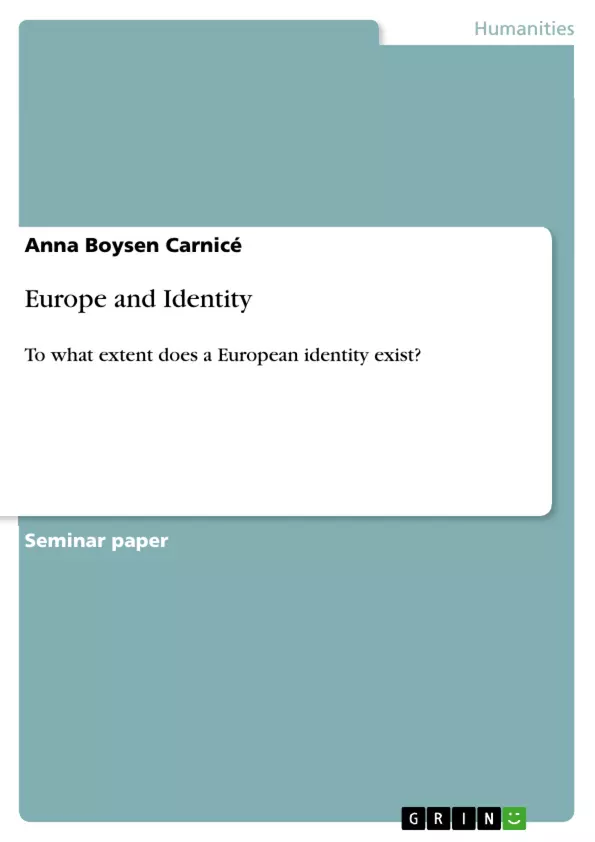In the beginning of this essay, the terms "identity" and "Europe" will be defined with the help of thoughts from nationalism, essentialism and social constructivism. In the main part, the author discusses the research question, using the resulting understandings of "identity" and "Europe", from different approaches, e.g. etymological, geographical, historical, political and conceptual, to examine to what extent a European identity exists. This essay will conclude with an attempt at answering to the research question.
Inhaltsverzeichnis (Table of Contents)
- Introduction
- Definition of key concepts
- Identity
- Europe
- Approaches on European identity in the EU
- Conclusion
- Bibliography
Zielsetzung und Themenschwerpunkte (Objectives and Key Themes)
The main objective of this essay is to investigate the extent to which a European identity exists. The essay defines the terms "identity" and "Europe" before examining different approaches to European identity within the EU.
- The concept of identity and its relation to essentialism and social constructivism
- The evolving definition of "Europe" and its connection to EU institutions, values, and citizens
- Different perspectives on European identity, including etymological, geographical, historical, political, and conceptual approaches
- The impact of populism, extremism, and the identarian movement on the understanding of European identity
- The challenges of measuring and operationalizing the concept of identity
Zusammenfassung der Kapitel (Chapter Summaries)
- Introduction: The essay introduces the topic of European identity and explores the diverse understandings of being "European." It highlights the challenges of defining and measuring identity, particularly in a rapidly changing world.
- Definition of key concepts: This chapter delves into the meaning of identity, examining its relationship to essentialism and social constructivism. It discusses the impact of social and historical changes on individual and collective identity formation.
Schlüsselwörter (Keywords)
The essay centers around key concepts such as European identity, identity formation, essentialism, social constructivism, populism, extremism, and the identarian movement. It also explores the challenges of measuring and operationalizing the concept of identity in a social scientific context.
- Quote paper
- Anna Boysen Carnicé (Author), 2022, Europe and Identity, Munich, GRIN Verlag, https://www.grin.com/document/1181835



